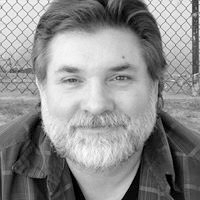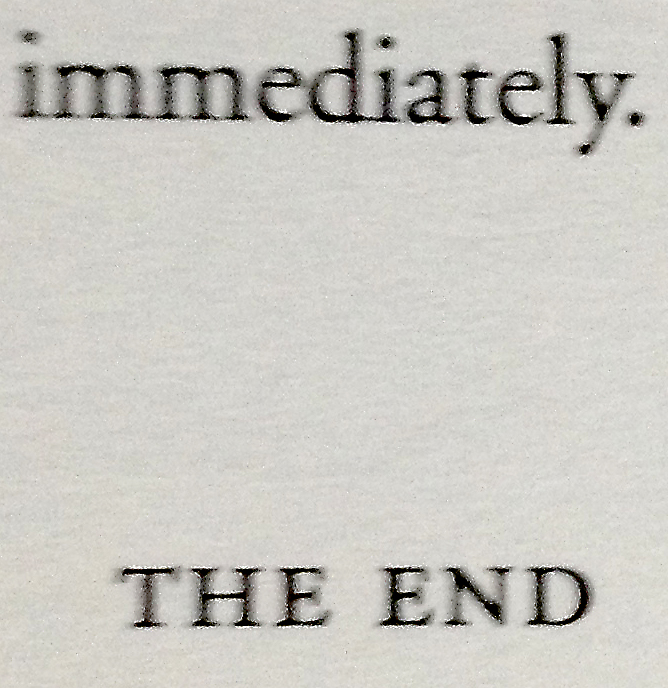A Conversation With Speculative Fiction Author E.J. Swift
 I met E.J. Swift last summer when we shared a panel at LonCon 3, with David Hebblethwaite and Adam Roberts, discussing writers who cross the boundary between mainstream fiction and science fiction. Since then, I’ve finished my second novel, Sleeping Embers Of An Ordinary Mind, and E.J. has completed her trilogy The Osiris Project. Not only that…E.J.’s short story “The Spiders of Stockholm” has been long-listed for The Sunday Times EFG Short Story Competition.
I met E.J. Swift last summer when we shared a panel at LonCon 3, with David Hebblethwaite and Adam Roberts, discussing writers who cross the boundary between mainstream fiction and science fiction. Since then, I’ve finished my second novel, Sleeping Embers Of An Ordinary Mind, and E.J. has completed her trilogy The Osiris Project. Not only that…E.J.’s short story “The Spiders of Stockholm” has been long-listed for The Sunday Times EFG Short Story Competition.
We felt it was time for a catch-up chat—about past writing and future plans.
Anne—So, E.J., we’ve both written fiction in which climate change is part of our world-building. Tell me how you became interested in this subject and the part it plays in your trilogy The Osiris Project.
E.J.—Climate change was something I’d had a growing interest and awareness of for a few years, and then I read Mark Lynas’s Six Degrees: Our Future on a Hotter Planet, and that was really a game-changer for me. The geo-political scenarios it hypothesizes were at once utterly horrifying but also, from a fiction writer’s point of view, fascinating. I’ve always been drawn to isolated landscapes – the bleak but beautiful. When it came to writing The Osiris  Project, I had the world map in mind very early on – a world radically altered by climate change, with borders redrawn and civilization shifted towards the poles. And that underpinned so much of the trilogy, in terms of character, society, political agendas, particularly in the second novel, Cataveiro.
Project, I had the world map in mind very early on – a world radically altered by climate change, with borders redrawn and civilization shifted towards the poles. And that underpinned so much of the trilogy, in terms of character, society, political agendas, particularly in the second novel, Cataveiro.
Anne, how important was climate change as you were developing the world of A Calculated Life? Because as a reader, it feels like a noticeable but very subtle element, which I loved – for example, the vineyards, olive and citrus groves surrounding Greater Manchester.
Anne—In any dystopia there are winners and losers—in terms of wealth and freedom—and it’s the same with climate change. I felt it would be interesting to locate my dystopian world in a region benefiting overall from climate change. In my imagined future world, Manchester and the north west of England become the new Tuscany of Europe. I’ve been tuned into climate issues for many years because I studied environmental sciences at the University of East Anglia, home of the Climatic Research Unit. I remember ice-cores being delivered to the department for historical climate analysis. And in 2006, I helped launch the Ashton Hayes Going Carbon Neutral Project in the community where I live. It’s now an exemplar for grassroots action thanks to the community’s enthusiasm. So far we’ve cut our carbon emissions by 25% through behaviour change and we’ve set up a Community Energy Company to generate power from solar energy. Our primary school now has free electricity!
Now that I’ve written two standalone novels, E.J., I’d love to know how you approached writing a trilogy. When did you realize your subject was too big for a standalone novel? And was it instantly clear to you how to break the narrative into three books?

 E.J.—I actually wrote Osiris as a standalone novel in the first instance, but when it came to submitting to agents I had a feeling I’d be asked about plans for sequels, and I left the story deliberately open-ended. The only thing I knew about the second book was that the location would move to outside Osiris, with an almost entirely new cast – I didn’t want to end up writing three variations of the same book, but rather to expand the canvas and the narrative points-of-view with each installment. But then I had so much fun with Cataveiro, the challenge in the third book was pulling everything back together, when my mind wanted to be off exploring an entirely different story! I think if I ever did another trilogy (and it’s definitely not on the cards anytime soon) I’d approach it quite differently. I love those trilogies where you might have hundreds, even thousands of years between books. And hopefully I’d be more organized too…
E.J.—I actually wrote Osiris as a standalone novel in the first instance, but when it came to submitting to agents I had a feeling I’d be asked about plans for sequels, and I left the story deliberately open-ended. The only thing I knew about the second book was that the location would move to outside Osiris, with an almost entirely new cast – I didn’t want to end up writing three variations of the same book, but rather to expand the canvas and the narrative points-of-view with each installment. But then I had so much fun with Cataveiro, the challenge in the third book was pulling everything back together, when my mind wanted to be off exploring an entirely different story! I think if I ever did another trilogy (and it’s definitely not on the cards anytime soon) I’d approach it quite differently. I love those trilogies where you might have hundreds, even thousands of years between books. And hopefully I’d be more organized too…
By contrast, I think you’re doing almost the opposite with your current novel, in terms of structure? Can you tell me a bit about the approach you’ve chosen, and why?
Anne—I spent several years mulling over this novel—Sleeping Embers Of An Ordinary Mind—before I settled on the structure. One of my main themes is the nature of success including, more specifically, how women’s achievements have tended to be overlooked. I decided to write three inter-weaving storylines set several hundreds of years apart. A trilogy of sorts!
I hoped this fractured structure would create a sense of immediacy. It’s proved both a challenge and immense fun to write. The settings are Renaissance Florence, present-day China and a future London in which The Academy of Restitution is attempting to lift women out of undeserved obscurity.
My first novel, A Calculated Life, is dystopian science fiction so, as you can see, I’m now moving into new writing territories—that of contemporary and historical fiction. How do you feel about entering new territory—switching to standalone novels following the success of your trilogy? Do you feel it’s a risk?
E.J.—I’m really looking forward to the era of standalones, I like the containment of the single novel. Of course you can’t guarantee readers who liked one book will automatically be interested in the next, but that goes for series too. I think perhaps the greater risk is moving around genres – the book I’m currently writing has a contemporary setting, and it’s quite different in tone to The Osiris Project books, though it also contains speculative elements. One writer I really admire for this versatility is Genevieve Valentine, whose novels aren’t constrained to any one genre – she’s gone from steampunk circus to 1920s prohibition to future eco-thriller, and seems to be able to turn her hand to any subject material.
I should say I’m a big fan of multilayered and intersecting narratives (writers like David Mitchell, to cite an obvious example) and I absolutely love the sound of Sleeping Embers of an Ordinary Mind. Both of your novels have explored future projections – would you say you’re naturally drawn to the speculative in writing (and in art!), or is this just coincidence?
Anne—I think I’m naturally drawn to speculative writing because it offers a huge canvas. Having said that, I prefer to create plausible scenarios. In my new novel the main characters are connected to the art world—I’m making use of my background as an artist—and two of the main characters are based on real people in Renaissance Italy. I feel the future storyline in my novel is perfectly plausible.
Your current work-in-progress, E.J., brings to mind Ben H Winters’ novel The Last Policeman in terms of setting because Ben’s premise is science fictional but it’s really a contemporary novel! There’s an asteroid hurtling towards Earth and the story imagines how people react when they know the world will end in a year’s time. I find that combination of contemporary fiction and speculative fiction extremely engaging so I can’t wait to see how you bring them together.
Sometimes I test my ideas in a short story—for example, to try out a different style of writing or to find the voice of a character. Your short story “The Spiders of Stockholm” was long-listed for 2015 Sunday Times EFG Short Story Award. Many congratulations. What an achievement! Can you describe the attraction of short form for you?
E.J.—Thanks, Anne! That was the loveliest surprise – I’d completely forgotten my editor had even submitted the story. “The Spiders of Stockholm” was part of the Irregularity anthology from Jurassic London, who are a joy to write for because they always put together such thought-provoking briefs (in this case, the tension between order and chaos in the Age of Enlightenment).
I don’t feel that I’m a natural short story writer, so I like having some ideas to springboard from. But one thing I love about the form is the opportunity to hone your language at the editing stage, whereas with a novel it feels like there’s always something that escapes you. Having said that, some of my favourite novels are short story collections in disguise, like Angelica Gorodischer’s Kalpa Imperial, or Rana Dasgupta’s Tokyo Cancelled, and I’d love to write something in that vein one day.
Have you published your short stories, and if so, where can we find them?
Anne—My short story, “The Adoption”, will be published this autumn in Phantasma an anthology of horror, SF, urban fantasy and paranormal fiction, including stories by J.D. Horn, Roberta Trahan, Kate Maruyama and Jodi McIsaac Martens.
Other than that I’m currently hoarding several drafts of short stories—more like vignettes. They’re on a single theme—how human relationships will be affected by advances in human reproduction technologies. I’m a huge fan of fragmented narratives and I’m now inclined to incorporate these vignettes in larger piece of writing, possibly a full-length novel.
One of my favourite examples of fragmented-narrative writing is Jennifer Egan’s A Visit From The Goon Squad and I’ll definitely read Angelica Gorodischer’s Kalpa Imperial. Thanks for the recommendation. I do feel that short form and split narratives suit me as a fiction writer. It’s possibly a throw-back to my days of rattling off short pieces of journalistic writing. Having said that, short fiction requires a great deal more honing that journalism deadlines ever allowed.
Let’s have another conversation, E.J., when some of our plans have played out. And good luck with your current writing.










Leave a Reply
Want to join the discussion?Feel free to contribute!